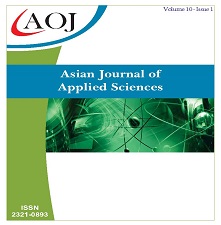Higher Order Thinking Skills (HOTs) based Assessment for Learning: A Model for Computer Networks Learning in Vocational School
DOI:
https://doi.org/10.24203/ajas.v10i1.6876Keywords:
AFL, HOTS, computer network learning, students of vocational high school.Abstract
Vocational High School is a kind of school that has a strategic role in fulfilling labors. One of the competencies that graduates of Vocational High School must have is the Higher Order Thinking Skills (HOTS). Many graduates of Vocational High School are not absorbed by industry because they do not have HOTS. This study aims to develop a HOTS-based Assessment for Learning (AFL) model that can be applied to learning computer networks for vocational students. This research is a development research using the modified model of Hopkins and Clark - Analysis, Design, Development, Implementation, and Evaluation (HC-ADDIE), which is a collaboration and modification of research, development, and diffusion model of the Hopkins and Clark - Instructional System Design - Analysis, Design, Development, Implementation, and Evaluation (HC-ISD ADDIE), and Classroom Action Research (CAR). The development stage includes designing a prototype model, validating the model, testing legibility, training teachers / observers, and implementing limited and expanded trials. The results showed that the HOTS-based AFL model of computer network learning for vocational students was successfully developed through the HC-ADDIE modified model.
References
Jabidi A, Slamet A, Khumaedi M. Kompetensi Kewirausahaan Siswa Sekolah Menengah Kejuruan. Journal of Vocational and Career Education [Internet]. 2017 Dec 11 [cited 2021 Feb 19];2(2). Available from: https://journal.unnes.ac.id/nju/index.php/jvce/article/view/13812
Alimudin IA, Permana T, Sriyono S. STUDI KESIAPAN KERJA PESERTA DIDIK SMK UNTUK BEKERJA DI INDUSTRI PERBAIKAN BODI OTOMOTIF. Journal of Mechanical Engineering Education. 2018;5(2):191–7.
Rose C, Nicholl MJ. Accelerated learning for the 21st century : cara belajar cepat abad XXI. Bandung: Nuansa; 2002.
Akuntono I. 2013, Pendidikan Nasional Sarat dengan Masalah Krusial [Internet]. KOMPASIANA. 2014 [cited 2021 Feb 19]. Available from: https://edukasi.kompas.com/read/2014/01/02/1508506/2013.Pendidikan.Nasional.Sarat.dengan.Masalah.Krusial
Nugroho RA. HOTS (Kemampuan Berpikir Tingkat Tinggi: konsep, pembelajaran, penilaian, dan soal-soal). Jakarta: Gramedia Widiasarana Indonesia; 2018.
Osborne J, Dillon J. Science Education in Europe: Critical Reflections. In: A Report to the Nuffield Foundation. London; 2008.
Heong YM, Othman WB, Yunos JBM, Kiong TT, Hassan RB, Mohamad MMB. The Level of Marzano Higher Order Thinking Skillsamong Technical Education Students. IJSSH. 2011;1(2):121–5.
Cotton K. Developing Employability Skills. USA; 1993.
Robinson JP. Information_Grade10_WhatAreEmployabilitySkills.pdf. ALABAMA COOPERATIVE EXTENSION SYSTEM [Internet]. 2000 Sep 15 [cited 2021 Feb 19];1(3). Available from: https://www.middletowncityschools.com/media/studentservices/Information_Grade10_WhatAreEmployabilitySkills.pdf
Abosalem Y. Assessment Techniques and Students’ Higher-Order Thinking Skills. International Journal of Secondary Education. 2016 Mar 7;4(1):1.
Brookhart SM, Nitko AJ. Assessment and grading in classrooms. New Jersey: Pearson Mermill Prentice Hall; 2008.
Chappuis S, Stiggins RJ. Classroom Assessment for Learning. Educational Leadership. 2002 Sep;60(1):5.
Miarso Y. Menyemai benih teknologi pendidikan. Jakarta: Kencana; 2007.
Downloads
Published
How to Cite
Issue
Section
License
Copyright (c) 2022 Muhammad Yassir, Husain Syam, Hasanah Nur

This work is licensed under a Creative Commons Attribution-NonCommercial 4.0 International License.
- Papers must be submitted on the understanding that they have not been published elsewhere (except in the form of an abstract or as part of a published lecture, review, or thesis) and are not currently under consideration by another journal published by any other publisher.
- It is also the authors responsibility to ensure that the articles emanating from a particular source are submitted with the necessary approval.
- The authors warrant that the paper is original and that he/she is the author of the paper, except for material that is clearly identified as to its original source, with permission notices from the copyright owners where required.
- The authors ensure that all the references carefully and they are accurate in the text as well as in the list of references (and vice versa).
- Authors retain copyright and grant the journal right of first publication with the work simultaneously licensed under a Attribution-NonCommercial 4.0 International that allows others to share the work with an acknowledgement of the work's authorship and initial publication in this journal.
- Authors are able to enter into separate, additional contractual arrangements for the non-exclusive distribution of the journal's published version of the work (e.g., post it to an institutional repository or publish it in a book), with an acknowledgement of its initial publication in this journal.
- Authors are permitted and encouraged to post their work online (e.g., in institutional repositories or on their website) prior to and during the submission process, as it can lead to productive exchanges, as well as earlier and greater citation of published work (See The Effect of Open Access).
- The journal/publisher is not responsible for subsequent uses of the work. It is the author's responsibility to bring an infringement action if so desired by the author.

